Creating Audience-Centric Content That Engages Readers


Knowing who you write for changes everything. Most creators guess at their audience and miss the mark over and over. Yet brands that create audience-centric content see up to 73 percent higher engagement rates than those who do not. It is not just about understanding age or location. The real trick is unlocking the hidden motivations, pain points, and patterns that make your readers tick. That is where real results start to appear.
Table of Contents
- Step 1: Define Your Target Audience's Needs
- Step 2: Research and Analyze Audience Preferences
- Step 3: Develop Tailored Content Strategies
- Step 4: Create Engaging and Relevant Content
- Step 5: Test and Optimize Content for Performance
- Step 6: Measure Engagement and Iterate for Improvement
Quick Summary
| Key Point | Explanation |
|---|---|
| 1. Understand audience needs deeply | Conduct comprehensive audience research to grasp psychological motivations and specific challenges beyond demographics. |
| 2. Continuously refine audience personas | Treat audience profiles as living documents that evolve with new insights and feedback. |
| 3. Develop a flexible content strategy | Create a strategy that incorporates various content formats to suit different audience preferences. |
| 4. Use storytelling for engagement | Craft narratives that emotionally connect with your audience, making the content feel personal and relevant. |
| 5. Measure engagement with depth | Implement a multidimensional engagement measurement system to track qualitative audience interactions and refine content accordingly. |
Step 1: Define Your Target Audience's Needs
Creating audience-centric content begins with understanding who you are actually speaking to. Most content creators make a critical mistake by developing content in a vacuum without truly comprehending their target audience's specific needs, challenges, and motivations.
The foundation of effective content strategy requires deep audience research that goes beyond basic demographic information. You need to develop a comprehensive audience persona that captures not just age and location, but psychological motivations, professional challenges, and emotional triggers.
To map out your audience effectively, start by collecting qualitative and quantitative data through multiple channels. Customer surveys, social media interactions, website analytics, and direct conversations provide rich insights into audience preferences. Learn more about audience research techniques that can transform your content approach.
Consider developing a detailed audience profile that includes key dimensions:
- Professional context and industry challenges
- Specific pain points and desired solutions
- Information consumption preferences
- Decision making patterns
- Communication style and language
Successful audience definition requires continuous refinement. Your initial audience persona is not a static document but a living framework that evolves with ongoing research and feedback. Track how your content resonates, monitor engagement metrics, and be prepared to adjust your understanding.
A precise audience definition allows you to craft content that feels personally crafted for each reader. When you truly understand their world, you can speak directly to their experiences, creating an immediate connection that transcends generic communication.
Verification of a well-defined audience involves asking critical questions: Can you describe your ideal reader in vivid detail? Would they feel like this content speaks directly to their unique situation? If the answer is yes, you have successfully completed the first crucial step in creating audience-centric content.
Below is a step overview table summarizing each key phase of creating audience-centric content, along with its main objective and verification question.
| Step | Main Objective | Verification Question |
|---|---|---|
| 1. Define Audience Needs | Deeply understand target audience motivations and challenges | Can you describe your ideal reader in vivid detail and ensure content feels personal? |
| 2. Research Preferences | Analyze audience content format and channel preferences | Can you confidently predict audience reactions to new content before publishing? |
| 3. Develop Content Strategy | Structure content themes and content types for audience segments | Can you explain how each piece serves an audience need and drives engagement? |
| 4. Create Content | Craft stories and examples that resonate emotionally and practically | Is your content generating meaningful engagement and shares? |
| 5. Test & Optimize | Refine content using data, A/B testing, and performance audits | Are engagement and conversion metrics improving over time? |
| 6. Measure & Iterate | Track multidimensional engagement and refine based on insights | Are you able to influence and systematically improve audience behavior? |
Step 2: Research and Analyze Audience Preferences
After defining your target audience, the next critical step in creating audience-centric content involves deep research and systematic preference analysis. This stage transforms your initial audience persona from a generic profile into a nuanced understanding of what truly motivates and engages your readers.
Digital analytics and social listening tools become your primary research instruments. Platforms like Google Analytics, social media insights, and specialized audience research software provide granular data about content consumption patterns. Explore advanced content strategy techniques that can elevate your research approach.
Qualitative research methods complement quantitative data collection. Customer interviews, focus groups, and open-ended survey questions reveal deeper psychological insights that raw metrics cannot capture. Pay attention to the language your audience uses, the problems they discuss, and the emotional context surrounding their professional challenges.
Key research dimensions to explore include:
- Content format preferences (video, long-form text, infographics)
- Preferred communication channels
- Most engaging topic clusters
- Emotional triggers and motivational drivers
- Knowledge gaps and information needs
Successful preference analysis requires continuous iteration. Your initial research provides a foundation, but audience preferences evolve rapidly in digital environments. Implement a quarterly review process where you reassess your findings, track emerging trends, and adjust your content strategy accordingly.
To verify the effectiveness of your research, assess whether you can confidently predict your audience's reaction to new content before publishing. Can you anticipate which topics will resonate most? Do you understand the emotional journey your content should guide readers through? If you can answer these questions with specificity, you have successfully completed a robust audience preference research process.
Remember that audience preference research is not about demographics but about understanding the human experiences, aspirations, and challenges behind the data. Your goal is to develop content that feels personally crafted for each reader, making them feel understood and valued.
Step 3: Develop Tailored Content Strategies
With a clear understanding of your audience, the next critical phase is developing a content strategy that speaks directly to their unique needs and preferences. This step transforms audience insights into a structured, actionable plan that ensures your content resonates deeply and drives meaningful engagement.
Content pillars become your strategic framework, representing core themes that align with your audience's professional challenges and interests. Each pillar should connect directly to the research conducted in previous steps, creating a cohesive narrative that addresses specific audience segments. Discover advanced content strategy techniques that can elevate your approach.
The most effective tailored strategies combine multiple content formats to match audience consumption preferences. Some readers prefer in-depth written guides, while others gravitate toward visual infographics or short video tutorials. Your strategy must provide flexibility, allowing audience members to engage with content in their preferred medium.
Key strategic considerations include:
- Mapping content types to specific audience segments
- Creating a balanced content mix across formats
- Developing a consistent brand voice that feels authentic
- Establishing clear messaging hierarchies
- Planning content distribution channels
Content personalization goes beyond surface-level customization. You want to create experiences that feel uniquely crafted for each reader. This means developing content that anticipates questions, addresses unspoken challenges, and provides actionable insights specific to different audience personas.
Implement a robust content scoring system that tracks how different pieces perform across audience segments. This allows continuous refinement of your strategy, enabling you to double down on what works and quickly adapt when engagement signals shift.
To verify your content strategy's effectiveness, assess whether you can confidently predict audience response before publishing. Can you articulate exactly how each content piece serves a specific audience need? Does your strategy provide a clear pathway for audience members to progress from awareness to deeper engagement? Answering these questions with precision indicates you have successfully developed a tailored content strategy.
Step 4: Create Engaging and Relevant Content
Transforming audience insights into compelling content requires a strategic approach that balances creativity with precise targeting. This step moves beyond generic information delivery to crafting narratives that feel personally crafted for your specific audience segments.
Storytelling becomes your primary engagement mechanism. Instead of presenting raw information, construct narratives that connect emotionally with your readers' professional experiences and aspirational goals. Explore advanced content creation techniques that can elevate your storytelling approach.
Language selection plays a critical role in content relevance. Analyze the communication patterns identified during audience research and mirror those linguistic nuances. Use terminology specific to your audience's professional domain, avoiding jargon while maintaining technical credibility. Your content should sound like a conversation with a trusted colleague who understands their unique challenges.
Key content creation principles include:
- Prioritizing practical, actionable insights
- Maintaining a consistent yet adaptable brand voice
- Integrating real-world examples and case studies
- Addressing potential audience objections proactively
- Creating content that solves specific problems
Content complexity must match audience expertise. An entry-level professional requires different depth and explanation compared to an industry expert. Develop content variations that provide appropriate context and detail for different skill levels within your target audience.
Implement a dynamic content framework that allows for personalization and segmentation. Use modular content structures that can be easily adapted for different audience personas, enabling more targeted and relevant communication.
To verify content effectiveness, assess whether your pieces generate meaningful engagement. Are readers spending significant time with your content? Do they share it within their professional networks? Are comments and interactions substantive and reflective of genuine interest? Answering yes to these questions indicates you have successfully created engaging and relevant content that truly resonates with your audience.
Step 5: Test and Optimize Content for Performance
Content creation is an iterative process that demands continuous refinement and strategic performance analysis. This final step transforms your carefully crafted content from a static product into a dynamic, evolving asset that adapts to audience preferences and engagement patterns.
Performance metrics become your primary diagnostic tool, providing granular insights into how different content elements resonate with your audience. Explore advanced optimization techniques that can transform your content strategy. Implement a comprehensive tracking system that goes beyond basic view counts, examining nuanced engagement indicators like time spent, scroll depth, interaction rates, and conversion performance.
A/B testing emerges as a critical optimization methodology. Create multiple content variations that test different headlines, visual elements, narrative approaches, and structural formats. Systematically compare these versions to understand which elements drive deeper audience connection. This scientific approach removes guesswork from content strategy, allowing data to guide your refinement process.
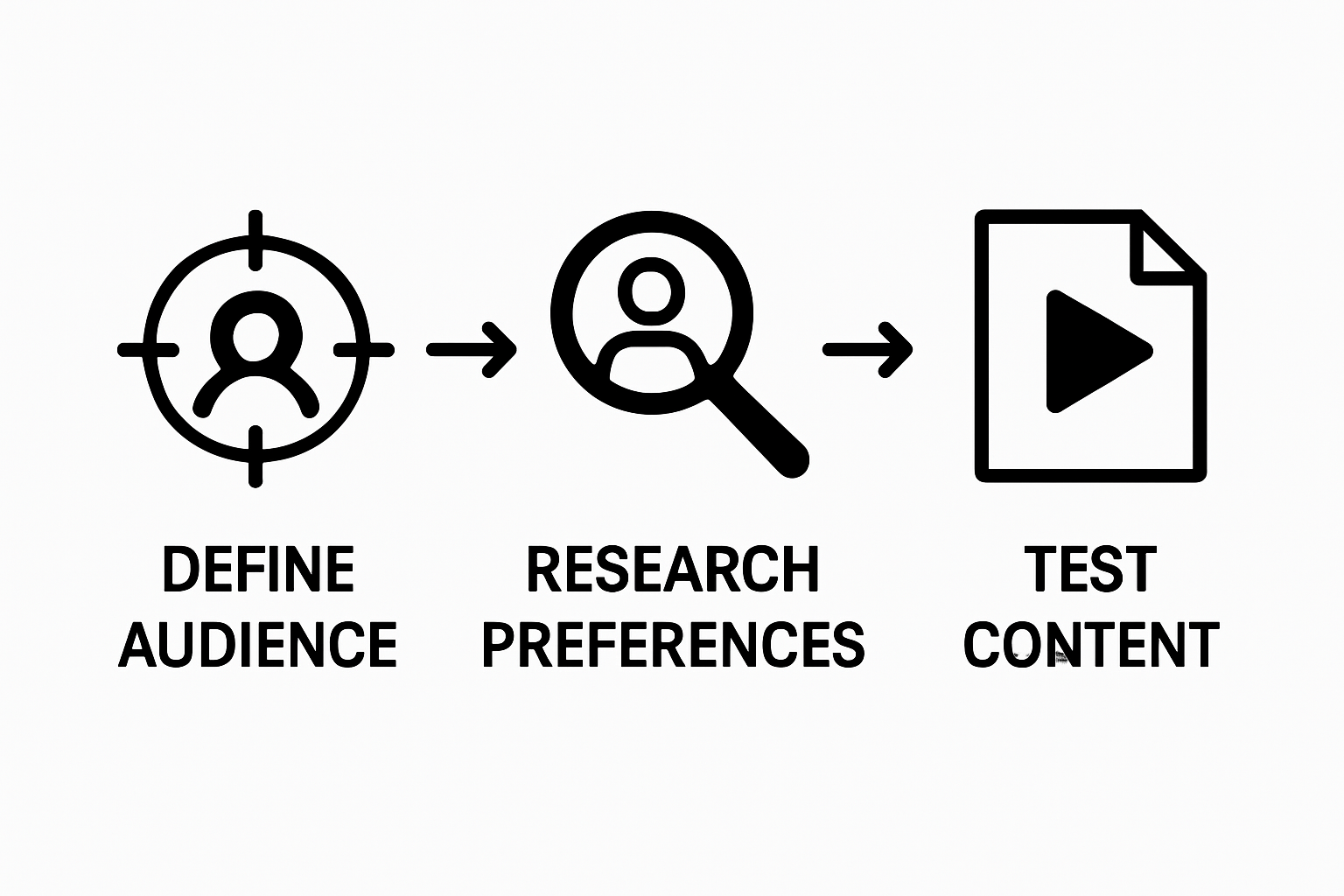
Key optimization focus areas include:
- Headline and title performance
- Visual content engagement rates
- Narrative structure effectiveness
- Call-to-action conversion metrics
- Audience segment-specific response patterns
Optimization requires a holistic view of content performance. Analyze not just individual piece metrics, but broader trends across your content ecosystem. Look for patterns that indicate which topics, formats, and storytelling approaches generate the most meaningful audience interaction.
Implement a quarterly content audit that provides a comprehensive review of your content portfolio. This systematic evaluation helps identify top-performing pieces, recognize emerging audience preferences, and strategically reallocate resources toward the most effective content strategies.
To verify successful optimization, assess whether your content consistently demonstrates improving engagement metrics. Can you demonstrate a measurable increase in audience interaction, retention, and conversion rates? Are you able to predict audience response with increasing accuracy? Answering affirmatively indicates you have successfully transformed your content strategy into a data-driven, audience-centric approach.
Step 6: Measure Engagement and Iterate for Improvement
Engagement measurement transforms content strategy from a static approach to a dynamic, responsive system. This critical step moves beyond surface-level metrics to understand the deeper psychological and behavioral patterns that indicate true audience connection.
Comprehensive engagement tracking requires a multidimensional approach that examines more than just view counts or surface interactions. Discover advanced measurement techniques that can provide deeper insights into audience behavior. Implement analytics tools that capture nuanced interaction signals like scroll depth, time spent, interaction rates, and conversion pathways.
Develop a holistic engagement scoring system that assigns weighted values to different interaction types. Not all engagement is created equal. A reader who spends ten minutes reading an article and shares it represents a more meaningful connection than someone who briefly skims the content. Your measurement framework should reflect these qualitative differences.
Key engagement measurement dimensions include:
- Emotional resonance indicators
- Behavioral interaction patterns
- Conversion and action-taking metrics
- Social sharing and amplification rates
- Long-term audience retention signals
Iterative improvement requires a proactive mindset. Treat each piece of content as a learning opportunity, continuously refining your approach based on audience feedback and performance data. This means being willing to completely restructure content strategies when data suggests a significant shift in audience preferences.
Implement a systematic review process that goes beyond quarterly audits. Develop a real-time monitoring system that allows rapid content adjustments. This agile approach enables you to quickly respond to emerging audience needs, technological changes, and shifting market dynamics.
To verify successful engagement measurement, assess whether you can confidently predict and influence audience behavior. Can you systematically improve content performance with each iteration? Are you able to identify the precise elements that drive deeper audience connection? Answering yes indicates you have transformed engagement measurement from a passive reporting exercise into an active strategy optimization tool.
Use this table as a checklist to verify key criteria for measuring content engagement and iterating for improvement.
| Engagement Metric | What to Look For | Why It Matters |
|---|---|---|
| Emotional Resonance | Signs content connects on a personal or professional level | Indicates deeper reader connection for long-term loyalty |
| Behavioral Patterns | Repeated visits, interaction with multiple sections | Shows content is valuable and engaging over time |
| Conversion & Actions | Downloads, signups, or other meaningful actions taken | Reflects content effectiveness in driving real outcomes |
| Social Sharing | Frequency and reach of shares or reposts | Amplifies content visibility and signals reader value |
| Retention Signals | Ongoing audience return rates and loyalty metrics | Demonstrates long-term impact and relationship building |

Let Your Content Finally Speak to the Right Audience
You have put time and care into defining your audience and shaping your message. Yet turning research and careful strategy into real, measurable online growth often feels like a struggle. If you are spending hours on content analysis, chasing shifting preferences, and testing endlessly without seeing better engagement or rankings, you are not alone. Many business owners and marketers find themselves stuck between understanding their readers and seeing actual SEO results. That gap between insights and impact can be frustrating.

Babylovegrowth.ai is designed to close that gap with the power of AI. Skip the manual guesswork and let our AI-driven content strategies turn research into engagement. We provide a step-by-step system that creates high-quality, audience-focused articles and manages your content optimization automatically. Start your free trial today to experience how quick and simple audience-centric growth can be. Visit Babylovegrowth.ai now and see your audience research turn into real organic results with less effort.
Frequently Asked Questions
How can I define my target audience for content creation?
Defining your target audience involves creating a detailed audience persona that includes not just demographics but also psychological motivations, challenges, and information preferences. Use data from surveys, social media interactions, and analytics to understand their needs better.
What techniques can I use to research and analyze audience preferences?
Utilize digital analytics, social listening tools, and qualitative methods like interviews and focus groups. This approach helps you uncover emotional triggers, content format preferences, and knowledge gaps that inform your content strategy.
How do I develop a content strategy tailored to my audience?
Develop content pillars based on core themes that align with your audience's needs. Ensure a mix of content formats and establish clear messaging to create a strategy that resonates with your target audience.
What metrics should I track to measure content engagement?
Track metrics such as time spent on page, scroll depth, interaction rates, and conversion performance. Additionally, implement a holistic engagement scoring system to prioritize meaningful interactions and refine your content strategy accordingly.
Recommended
Smart SEO,
Faster Growth!
Most Read Articles
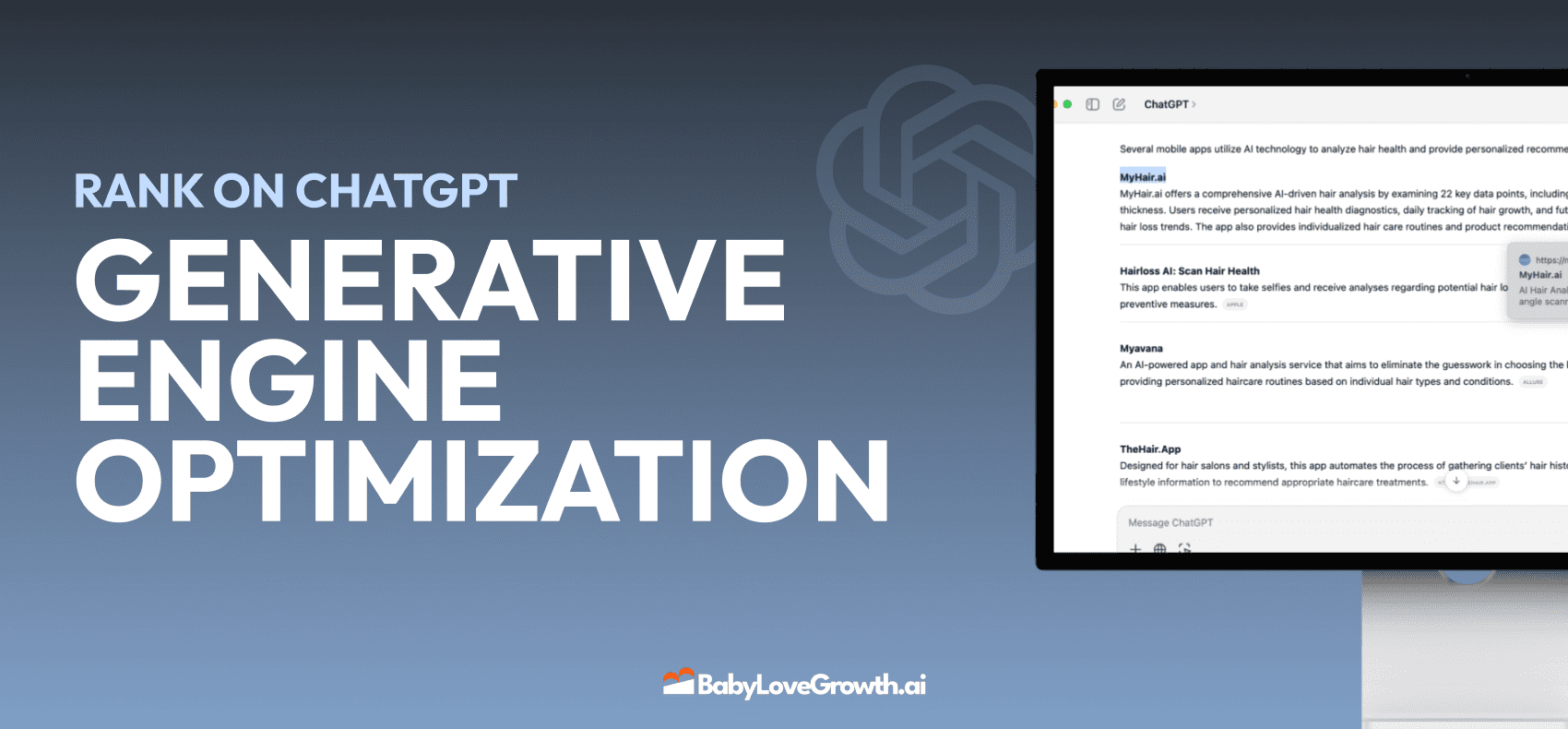
Generative Engine Optimization (GEO)
Learn how Generative Engine Optimization (GEO) helps your content rank in AI search engines like ChatGPT and Google AI. This comprehensive guide explains the differences between SEO and GEO, why it matters for your business, and practical steps to implement GEO strategies for better visibility in AI-generated responses.
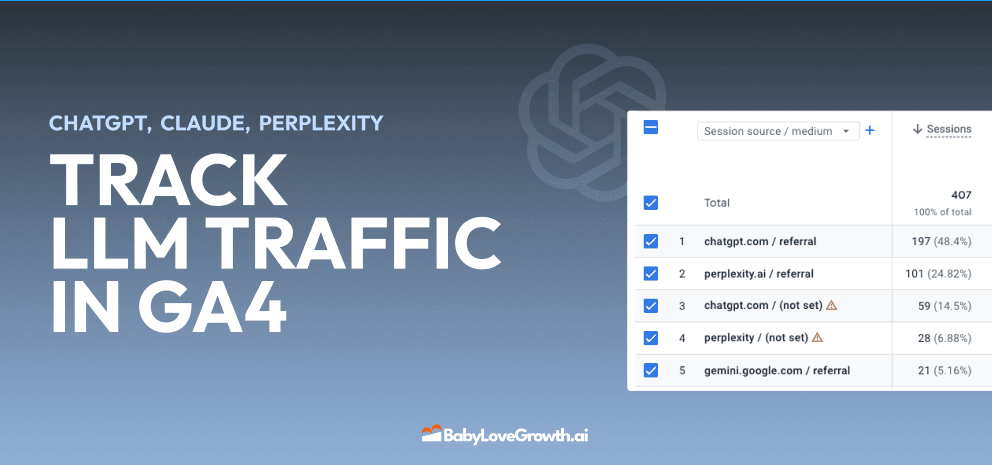
Track LLM Traffic in Google Analytics 4 (GA4)
Learn how to track and analyze traffic from AI sources like ChatGPT, Claude, Perplexity, and Google Gemini in Google Analytics 4. This step-by-step guide shows you how to set up custom filters to monitor AI-driven traffic and make data-driven decisions for your content strategy.
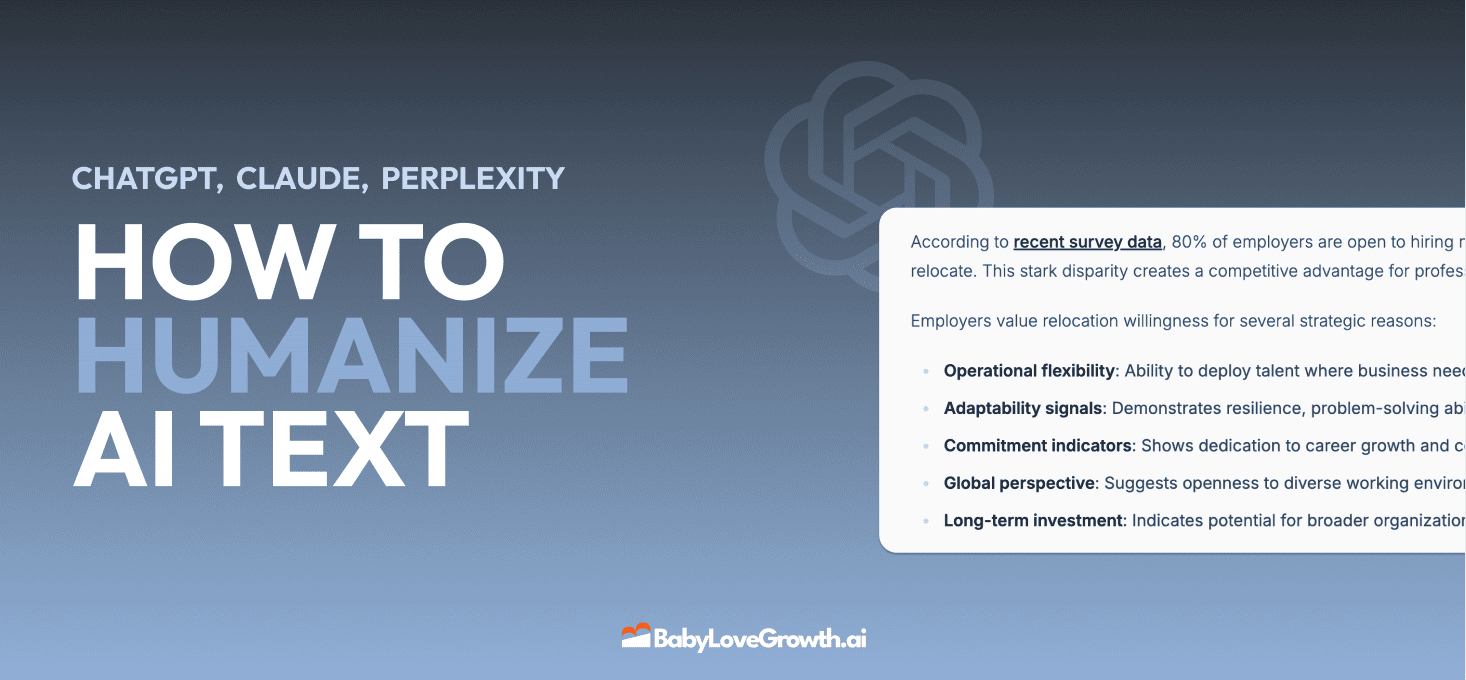
How to Humanize AI Text with Instructions
Learn practical techniques to make AI-generated content sound more natural and human. This guide covers active voice, direct addressing, concise writing, and other proven strategies to transform robotic text into engaging content.
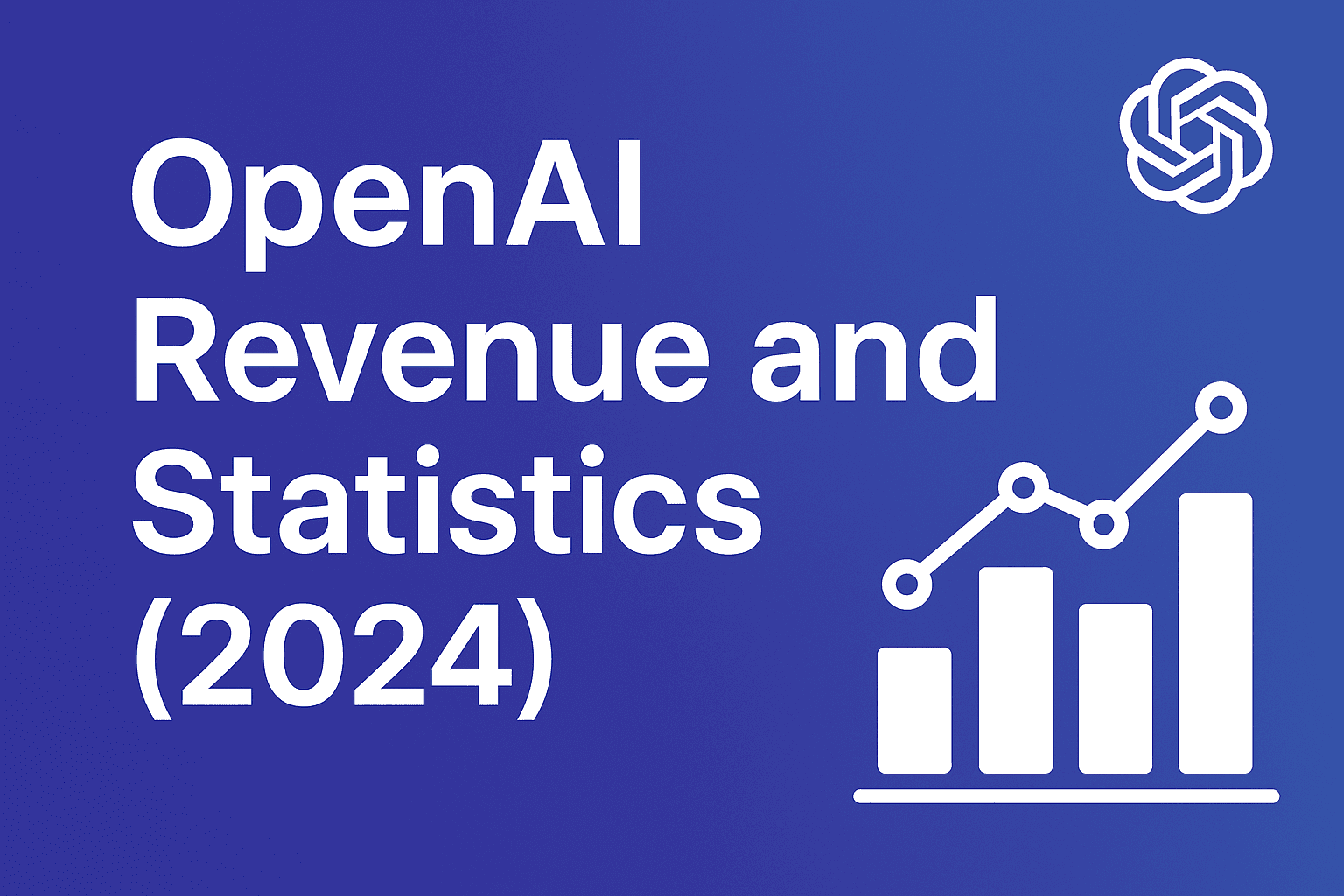
Open AI Revenue and Statistics (2024)
Comprehensive analysis of OpenAI financial performance, user engagement, and market position in 2023. Discover key statistics including $20B valuation, $1B projected revenue, and 100M+ monthly active users.